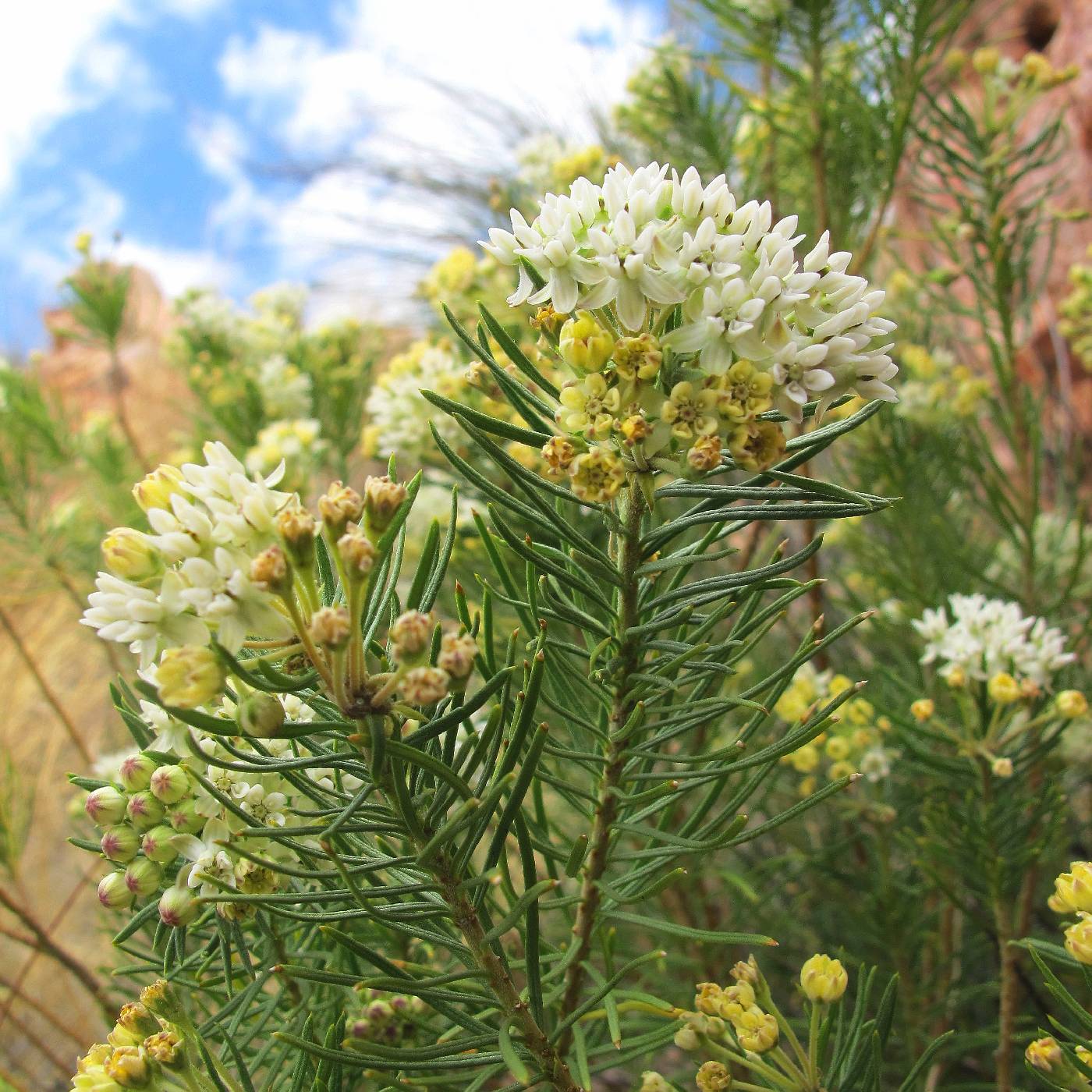
|
Family: Apocynaceae |
PLANT: Perennial herbs, rarely shrubs or subshrubs. STEMS: pubescent to glabrous, non-glandular. LEAVES: opposite, whorled or irregularly alternate. INFLORESCENCE: umbelliform cymes, the flowers opening synchronously. FLOWERS: showy; calyx divided nearly to the base; corolla deeply divided, the lobes mostly reflexed, displaying the prominent crown and anther head, in ours glabrous to sparsely hairy outside, mostly minutely pustular-hairy inside; crown extremely variable in form, arising from the column below each anther, of 5 distinct, infolded to subglobular segments (hoods), each with an inner crest or appendage (horn), rarely the horn entirely absent; anther head elevated on a more or less conspicuous column, the anther wings mostly flaring outward toward the base giving the anther head a truncate-conic form; pollinia pendulous from the translator arms, flat, asymmetrically obovate to oblanceolate; stigma head truncate with a central depression. FOLLICLES: mostly erect on deflexed pedicels, the surface smooth, rarely tuberculate. NOTES: Ca. 150 spp.; in the Americas, particularly Mex. and the U.S., also Afr. (For Aesculapius, legendary Greek physician and god of medicine.) A genus of many documented uses among American Indians; also stem fibers have been used for cordage and textiles, the silky seed hairs as a kapok substitute, and the latex for rubber; the latex has most recently been investigated as a petroleum substitute. Milkweed cardenolides, physiologically active compounds related to digitalis, are of interest for their powerful emetic and cardiotonic properties. A number of species are toxic to livestock but are distasteful and are seldom eaten. Woodson, R. E., Jr. 1954. Ann. Missouri Bot. Gard. 41:1-211. REFERENCES: Sundell, Eric. 1994. Asclepiadaceae. J. Ariz. - Nev. Acad. Sci. Volume 27, 169-187. Cor deeply divided, spreading or more often reflexed and concealing the cal; corona of 5 prominent hoods arising from near the top of the filament-column and subtending the anthers, alternate with the cor-lobes, the hoods diverse in structure and providing specific criteria, straight or curved, erect or ascending, or spreading at the base and upcurved at the tip, often bearing internally near the base a slender or flattened exsert horn; anthers tipped with a triangular, hyaline, inflexed appendage; pollinia solitary in each pollen-sac, pendulous, apically attached to the translator; follicles commonly erect, acuminate; seeds comose, except in A. perennis; perennial herbs mostly from a stout root or caudex, with usually simple stems (never twining), opposite (in some spp. alternate or whorled) lvs, and small or medium-sized fls in peduncled, terminal or extra-axillary cymose umbels. 150, mainly New World, esp. N. Amer. (Acerates, Asclepiodora) Gleason, Henry A. & Cronquist, Arthur J. 1991. Manual of vascular plants of northeastern United States and adjacent Canada. lxxv + 910 pp. ©The New York Botanical Garden. All rights reserved. Used by permission. |
This project was made possible in part by the Institute of Museum and Library Services [MG-70-19-0057-19].
Powered by Symbiota



